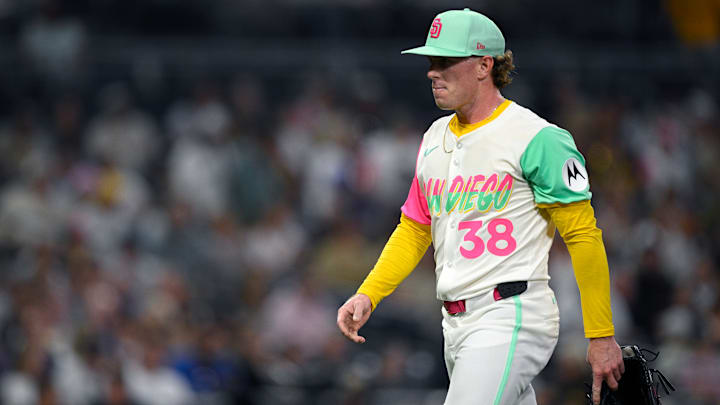The Padres are in that awkward offseason space where every dollar matters, but so does every roster spot. They’re trying to squeeze under a tighter budget without completely punting on 2026, and that’s a brutal line to walk for a team that already feels thin in too many places. The non-tender deadline only adds more pressure. On paper, it’s the perfect chance to shave a few salaries and create flexibility. In reality, for a roster like San Diego’s, the wrong non-tender calls could turn a frustrating situation into a full-blown mess.
That’s what makes this particular group of Padres non-tender candidates so tricky. These aren’t bloated contracts clogging up the books or aging veterans with no clear role. These are players who fill real needs on a team that doesn’t have obvious replacements lined up. You can talk yourself into the idea that moving on would create space or save some money, but if the front office isn’t careful, cutting any of them loose could leave the Padres in even worse shape than they are right now.
3 Padres non-tender moves that would leave an already thin roster exposed
Jason Adam (RHP)
On a spreadsheet, Jason Adam looks like the easiest cost-cutting move the Padres can make. He’s coming off a ruptured quad tendon, landed on the 60-day IL in early September, and is projected to earn around $6.8 million — the kind of number that gets circled at non-tender time. There have already been rumblings that the Padres might shop him. But here’s the issue: San Diego’s bullpen is far from stable. When Adam is healthy, he profiles as a legitimate leverage reliever, the type contenders rely on and usually overpay to acquire. Moving on from him strictly for short-term savings without lining up a comparable late-inning arm would be a classic example of creating one problem just to fix another.
Luis Campusano (C)
Luis Campusano represents a different kind of roster gamble. His 2025 season was a roller coaster — part starter, part backup, and part Triple-A fill-in as the Padres kept reshuffling the depth chart. That kind of inconsistency can tempt a front office into resetting the position entirely. But with Campusano projected to make just about $1 million, the savings would barely register on the ledger. More importantly, the Padres are already thin at catcher, and the league at large isn’t exactly overflowing with available starter-quality options. Unless San Diego has a clear upgrade already lined up, non-tendering Campusano would be more reckless than strategic. You don’t solve a catching problem by creating a bigger one.
JP Sears (LHP)
JP Sears is the kind of pitcher you don’t appreciate until he’s gone. His Padres stint has been uneven (5.47 ERA), and $3.5 million isn’t nothing for a back-end arm, especially for a club trying to trim payroll. But context matters. The Padres are desperate for starting pitching — not hopeful, not curious, but desperate. Non-tendering Sears only makes sense if there is a guaranteed replacement ready to walk through the door, and those aren’t exactly growing on trees. Letting him go without a plan would leave the rotation thinner, the pressure higher, and the front office scrambling for innings by midseason.
Ultimately, these decisions are going to reveal a lot about how the Padres see themselves in 2026 and beyond. If the goal is to remain competitive while trimming around the edges, Adam, Campusano, and Sears are exactly the kinds of players you should be maximizing, not cutting loose to save a few million. The non-tender deadline is a tool, not a shortcut, and if the Padres use it carelessly, they won’t solve a single roster concern, they’ll just make their roster problems even worse.
